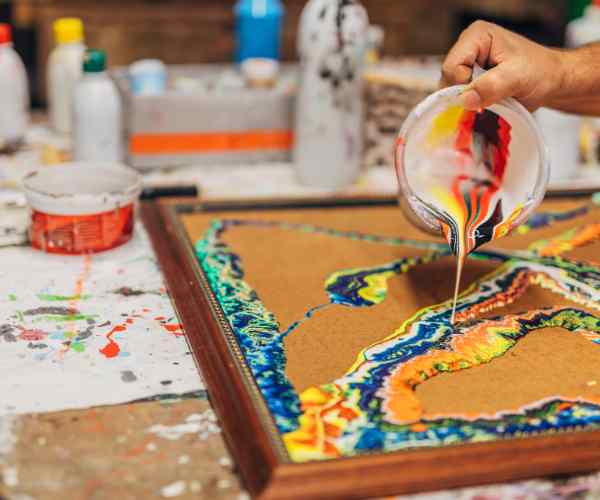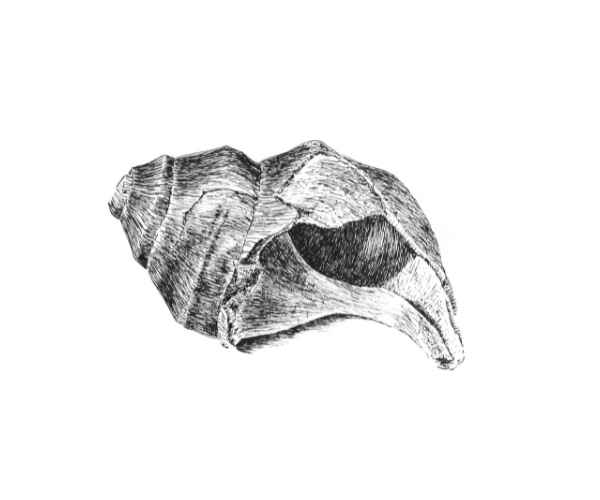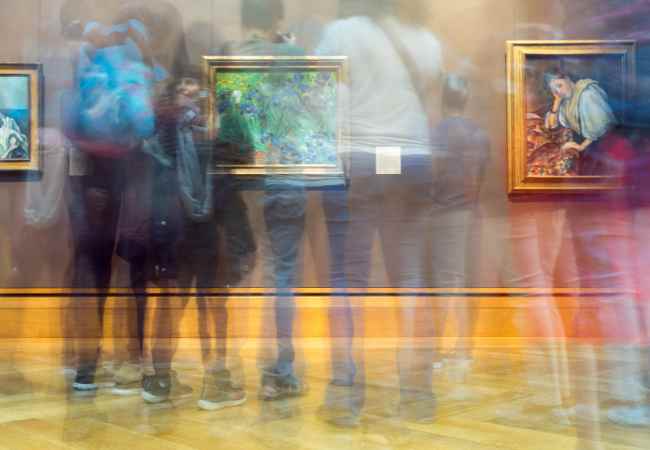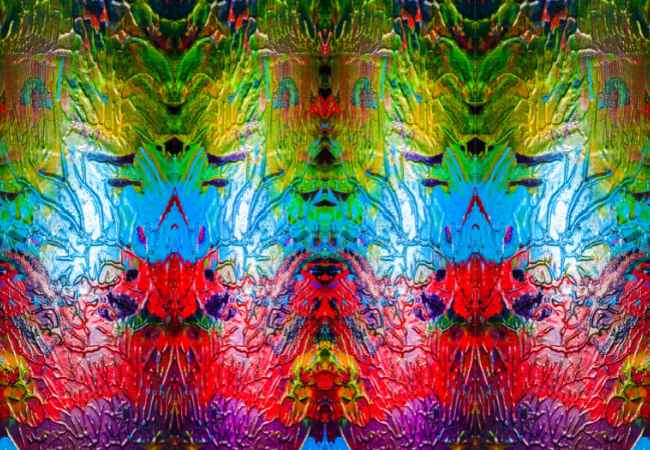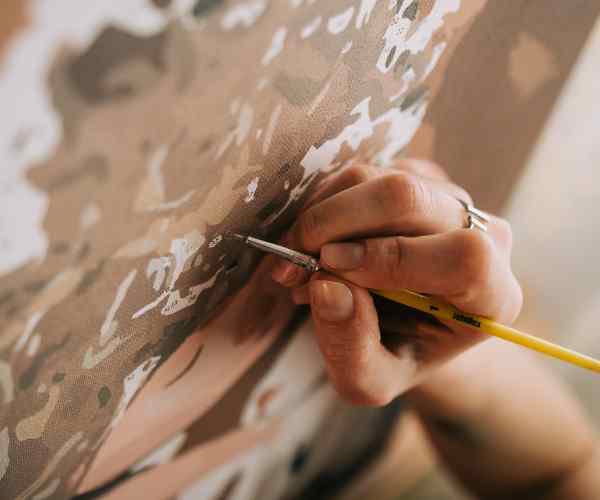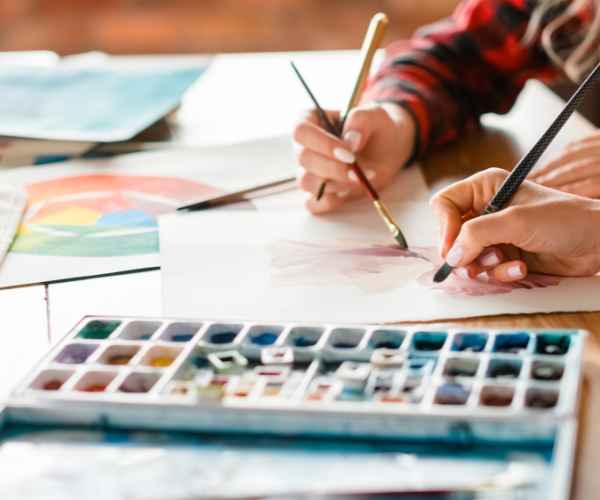Understanding light and shadow in art is crucial for creating depth and emotion in any piece.
When I first picked up a paintbrush, I remember being captivated by how light could completely transform a scene. The way a beam of sunlight danced across a tabletop, casting intricate shadows, made me realize that light isn’t just illumination; it’s a vital component of storytelling in art.
Light and shadow serve as expressive elements that breathe life into our artwork. They can evoke a wide range of emotions—from warmth and comfort to mystery and tension. Consider how the gentle glow of dawn can inspire hope, while the deep shadows of dusk may evoke feelings of solitude.
Mastering these concepts can elevate an artist’s work, making it not only visually stunning but also relatable and impactful. Whether you’re capturing the subtle nuances of a still life or the dramatic interplay of shadows in a portrait, understanding light and shadow can turn your art from good to extraordinary.

The Basics of Light and Shadow in Art
What Is Light?
Light, in the context of art, is more than just a source of illumination; it’s a dynamic medium that shapes perception. It defines our reality, allowing us to see forms, colors, and textures. Think about it: without light, we would be surrounded by darkness, unable to appreciate the world around us.
In art, light acts as a storyteller. It guides the viewer’s eye and highlights what’s important in a composition. A soft, diffused light might evoke a sense of tranquility, while harsh, direct light can create stark contrasts that heighten drama.
Psychologically, light influences how we feel. Have you ever walked into a brightly lit room and felt more awake and energized? Conversely, dim lighting often encourages relaxation and introspection. Artists harness this power, manipulating light to convey emotions and set the mood of their pieces.
What Is Shadow?
Now, let’s talk about shadows. While light brings objects to life, shadows add depth and dimension, creating a sense of realism. A shadow is essentially the absence of light, but it plays a crucial role in how we perceive shapes and forms.
Shadows can evoke feelings and create atmosphere. A long, looming shadow might suggest foreboding or tension, while soft, subtle shadows can impart a sense of calm. Think about the way the shadows of tree branches stretch across a sunlit lawn; they create a pattern that’s not just visually interesting but also adds complexity to the scene.
In many ways, shadows are just as important as light in shaping the viewer’s emotional response. They help define space and form, allowing us to appreciate the intricacies of an artwork.
The Relationship Between Light and Shadow
The interplay between light and shadow is a dance that defines the character of any artwork. They rely on each other; without light, there would be no shadow, and without shadow, the effects of light would lose their impact. This relationship is fundamental to creating a balanced composition.
Take, for example, Caravaggio’s “The Calling of St. Matthew.” The dramatic contrast between the illuminated figures and the surrounding darkness pulls the viewer into the narrative. The light not only highlights St. Matthew’s expression but also guides our attention to the moment of divine intervention. Here, light and shadow aren’t just techniques; they are the heartbeat of the story.
Techniques for Mastering Light and Shadow
Chiaroscuro: The Art of Contrast
One of the most effective techniques for harnessing the power of light and shadow is chiaroscuro, which means “light-dark” in Italian. This technique emphasizes the contrast between light and shadow to create a sense of volume and depth.
Historically, chiaroscuro has been used to create dramatic effects, as seen in the works of artists like Caravaggio. His mastery of this technique allowed him to create strikingly realistic figures that almost seemed to emerge from the darkness. In paintings like “Judith Beheading Holofernes,” the sharp contrasts between the light illuminating Judith and the surrounding shadows create an intense emotional experience, drawing the viewer into the narrative.
Sfumato: The Subtle Transition
Another fascinating technique is sfumato, which is all about softening the edges of light and shadow to create a more gradual transition. This technique was famously employed by Leonardo da Vinci, who used it to achieve a smoky effect in his portraits, notably in the enigmatic “Mona Lisa.”
In sfumato, outlines disappear into the shadows, allowing for a naturalistic representation that mimics how we perceive light in the real world. This method is perfect for capturing subtle details in skin tones or atmospheric perspectives in landscapes, helping to create a seamless blend that invites the viewer to explore the artwork further.
The role of color temperature
Lastly, let’s talk about color temperature. The colors we choose can dramatically influence our perception of light and shadow. Warm colors, like yellows and reds, tend to advance, making areas appear brighter and more illuminated, while cool colors, like blues and greens, recede, often suggesting shadow.
Consider the stunning landscapes of Claude Monet, where the warm golden tones of the sunset cast a magical glow over the scene. The shadows of the trees and water are painted in cooler shades, creating a beautiful contrast that enhances the overall composition. This thoughtful interplay of warm and cool colors not only defines the light but also sets the mood for the entire piece.
Real-Life Applications of Light and Shadow in Art
Everyday Observations
Let me share a little secret with you: inspiration for understanding light and shadow often lurks in the most ordinary moments of our daily lives.
I still vividly remember one sunny afternoon when I took a stroll through my neighborhood. The light was just right, casting long shadows from the trees that lined the sidewalk. I stopped to admire how the golden rays of the sun filtered through the leaves, creating a dappled pattern on the ground. It was like nature itself had painted an intricate masterpiece!
In that moment, I felt the urge to pull out my sketchbook and capture the scene. But more importantly, it struck me how often we overlook these little treasures. The way light plays on the surface of a cup of coffee, how shadows stretch across a busy street, or even how the fading light of evening casts a warm glow in our living rooms can all serve as incredible sources of inspiration for our art.
I encourage you, dear reader, to take a moment each day to observe your surroundings. Maybe you’ll notice the way the sunlight hits your favorite plant, casting beautiful shadows on the wall. Or perhaps you’ll spot a fleeting moment—a child playing in the park, illuminated by the soft light of dusk, their shadow dancing along the grass.
These observations are more than just visual treats; they’re opportunities to deepen your understanding of light and shadow. By training your eye to notice these details, you’ll cultivate a wellspring of inspiration that can inform your artwork in unexpected ways.
Practical Exercises
Now, let’s get practical! Here are some simple exercises that you can do to practice understanding light and shadow. These will help you strengthen your skills and make you more comfortable with capturing these concepts in your artwork.
1. Still Life Setup
Start by arranging a simple still life in your home. Grab a few objects—perhaps a fruit bowl or a couple of interesting mugs. Place them near a window where natural light can pour in.
- Focus: Observe how the light interacts with your objects. Notice the highlights where the light hits and the shadows that fall behind them.
- Sketch: Spend some time sketching the arrangement. Don’t worry about making it perfect; focus on capturing the shapes and the way light defines them.
2. Shadow Studies
Head outside on a sunny day and find a spot where shadows are clearly visible.
- Exercise: Bring a sketchbook and some charcoal or pencils. Start by drawing the shadows you see, paying close attention to their shapes and how they change depending on the angle of the light.
- Tip: Use different pressures on your pencil to represent the depth of the shadows. This will help you practice rendering the subtle variations in light and dark.
3. Quick Gesture Drawings
Set a timer for 5 minutes and find a comfortable place where you can observe a scene—maybe a café or a park.
- Focus: Quickly sketch the overall scene, paying special attention to how light and shadow define the forms within it.
- Tip: Try to capture the essence of the light and shadow in your drawing without getting caught up in details. This exercise will help you develop your ability to see the big picture.
4. Daily Light Journal
Consider keeping a daily light journal.
- Practice: Each day, take a few minutes to jot down observations about the light and shadows you encounter.
- Reflection: You could note the time of day, the weather, and how these factors influence the light around you.
Reflecting on your experiences will help you internalize the lessons of light and shadow, making you more mindful of these elements in your artwork.
FAQs
Why is understanding light and shadow important in art?
Understanding light and shadow is like holding the key to a treasure chest filled with emotional and visual depth.
When we grasp how light interacts with different surfaces and shapes, we unlock the ability to breathe life into our artwork. Just think about how a well-placed shadow can create drama or a highlight can evoke warmth. It’s the difference between a flat, lifeless painting and one that pulls the viewer into its world, making them feel something.
Take Rembrandt, for example. His mastery of light and shadow transforms ordinary moments into profound experiences. In works like “The Night Watch,” the dramatic contrasts draw our attention to the focal points and convey a sense of narrative urgency.
Light and shadow work hand-in-hand to create atmosphere and emotion, making them essential tools for any artist aiming to communicate more than just an image.
How can I improve my understanding of light and shadow?
Improving your understanding of light and shadow takes practice and a keen eye for observation. Here are some tips to get you started:
- Daily Observation: Make it a habit to observe how light behaves throughout the day. Notice how the angle of the sun changes the length and intensity of shadows.
- Photo Reference: Use photographs as reference material. Study how different lighting affects colors and forms. You can find plenty of inspiring images online—just look for photography that showcases strong contrasts.
- Art Classes: Consider enrolling in a drawing or painting class that focuses on figure drawing or still life. Working with a live model or a carefully arranged still life can help you see the nuances of light and shadow in real time.
- Keep a Sketchbook: Dedicate a sketchbook to practicing light and shadow. Create quick sketches focusing solely on these aspects, using only black and white to emphasize the contrasts.
- Feedback and reflection: Share your work with others or seek feedback. Sometimes, a fresh perspective can illuminate areas for improvement that you might not see yourself.
What are some famous artworks that exemplify light and shadow?
Several masterpieces come to mind that beautifully illustrate the principles of light and shadow. Here are a few notable works:
- “The Calling of St. Matthew” by Caravaggio:
- This painting showcases dramatic chiaroscuro, with sharp contrasts between light and dark. The light falls on St. Matthew, highlighting the moment of divine revelation while the background remains in shadow, creating a sense of mystery.
- “Girl with a Pearl Earring” by Johannes Vermeer:
- Vermeer’s use of light creates a soft, luminous quality that brings the subject to life. The subtle shadows on the girl’s face and the delicate highlights on the pearl earring enhance her ethereal beauty.
- “The Storm on the Sea of Galilee” by Rembrandt:
- In this piece, Rembrandt masterfully uses light to draw attention to the figures struggling against the storm. The swirling shadows of the sea and the dramatic lighting intensify the emotional turmoil captured in the scene.
- “Mona Lisa” by Leonardo da Vinci:
- Da Vinci’s use of sfumato in the Mona Lisa creates soft transitions between light and shadow, contributing to her enigmatic expression. The light gently caresses her face, adding to the painting’s allure.
Can digital artists apply these principles?
Absolutely! The principles of light and shadow are universal and transcend traditional mediums, applying just as effectively to digital art.
In digital painting, artists have a unique advantage with tools that allow them to manipulate light and shadow with precision. Software like Photoshop or Procreate provides layers, brushes, and blending modes that can mimic traditional techniques. For example, using soft brushes to create highlights and hard edges for shadows can help replicate the effects of chiaroscuro and sfumato.
Moreover, digital artists can experiment with lighting effects in ways that traditional mediums may not allow. They can easily adjust lighting sources, create atmospheric effects, and even animate light transitions. This flexibility can enhance their work, adding depth and realism that captivates the viewer.
Whether you’re creating a digital illustration or a 3D model, mastering light and shadow will elevate your artistry and help convey emotion in your projects.
Conclusion
In summary, understanding light and shadow in art is not just a technical skill; it’s a vital part of expressing emotion and depth in your work. These elements can transform your pieces from simple images into powerful stories that resonate with viewers.
I encourage you to explore these concepts in your artistic journey. Experiment, observe, and practice regularly. Remember, mastery comes with time and dedication.
I’d love to hear about your experiences with light and shadow in your art! Feel free to share your insights, stories, or any challenges you face. Let’s learn and grow together as artists!

